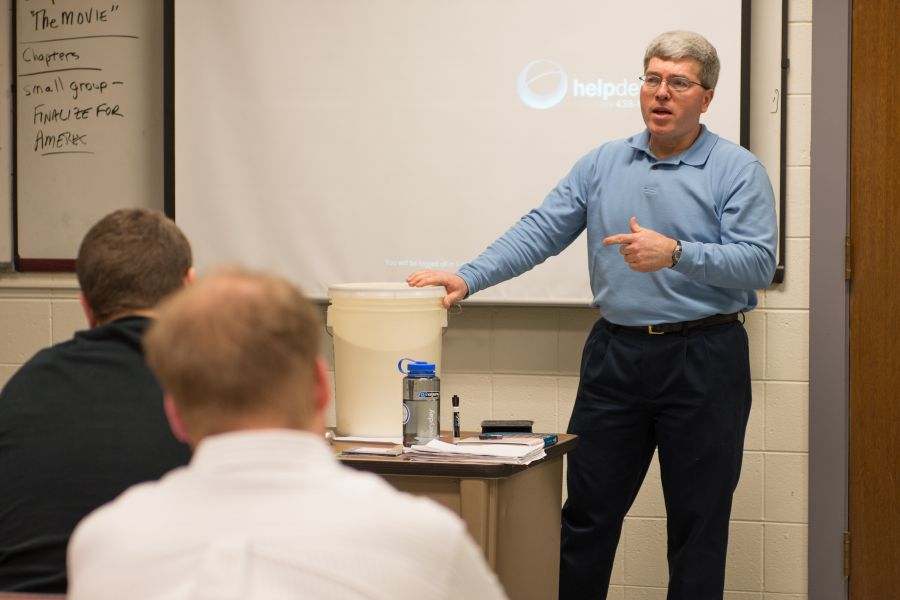For the second year, Department of Technology and M.B.A. students are working together to create and market real products for their New Product Design and Development course.
The course is the brainchild of Associate Professor of Marketing Peter Kaufman and Associate Professor of Technology Louis Reifschneider and the culmination of years of partnership between the two professors.
“This course I would say is unique at the University because you have two different colleges where the classes are essentially co-taught and students are expected to work together,” Reifschneider said. “We have a common syllabus, but there are deliverables for M.B.A.s that are spelled out that are different than those for the Technology students.”
Kaufman said it is very resource intensive and challenging to do co-teaching. But this is exactly the type of teamwork called for in the University’s strategic plan, Educating Illinois 2013-2018: Individualized Attention, Shared Aspirations, which states the University should “enhance cross-divisional and cross-departmental collaboration.”
The professors have been working together for about five years. They received the University’s Outstanding Team Research Award in 2012 for their innovative teaming of business and technology students working on the marketing of sustainable technologies: bio-sourced materials.

Educating Illinois in action: Read more about how Illinois State’s strategic plan is being implemented: EducatingIllinois.IllinoisState.edu.
More recently, they received a $3,000 university grant to buy equipment that is being used to build the products for the product design and development class.
Kaufman and Reifschneider both have experience working in the private sector, Kaufman in sales and planning and Reifschneider as an engineer doing product design. They use these experiences to make the class as realistic as possible.
The point of the course is to give students the opportunity to come up with product ideas and then develop them through market research and product design into prototypes that could be manufactured into real products.
“The objective of the course is that students come up with their own ideas. But we are open to companies that want to approach us and pitch an idea,” Reifschneider said.
Reifschneider said students’ product ideas must be simple enough to build and market in a semester but complex enough to serve a market need.
Last year, one student created storage bins for Jimmy John’s delivery bikers. The sandwich company didn’t bite, but a manager at Noodles and Company offered to buy a bunch of the bins for $50 each, Kaufman said.
“This is really real world,” Reifschneider said. “I tell the students when I advertise this class, ‘This is the closest thing to product design that you are going to see at a university.’”
Reifschneider said a large employer of Illinois State graduates recommended students develop experience working with others outside their discipline. In addition, he said he taught a product design class in the past but it had been missing real market analysis.
“Products are not created just because an engineer wants a job,” he said. “Products exist because they are solving needs. There’s been a market analysis involved. That was the missing link.”
So last year, Reifschneider joined forces with Kaufman to start this class, which is offered to Technology seniors and M.B.A. students, many of whom are 10 to 15 years older than their undergraduate counterparts, making for an interesting diversity in backgrounds and age levels. The current class has 15 Tech students and six business students.
The students are split into five groups with at least one M.B.A. student on each team. The teams have a project manager, fabricator, designer, and market researcher and will need to conduct market research in order to create a working prototype of the product that customers would want to buy.
“Often times, there is so much structure in a lot of the classes where students may not have a chance to experiment and fail, adjust, improve, and succeed,” Kaufman said. “We are taking some of the structure out. Granted we give the students parameters, but we say, ‘Go figure it out. Here is the design problem; go work on it. Create sketches, talk to customers, make low-fidelity prototypes, and then move it up. Get some additional feedback and fine-tune it.’”
Kevin Bersett can be reached at kdberse@IllinoisState.edu.


